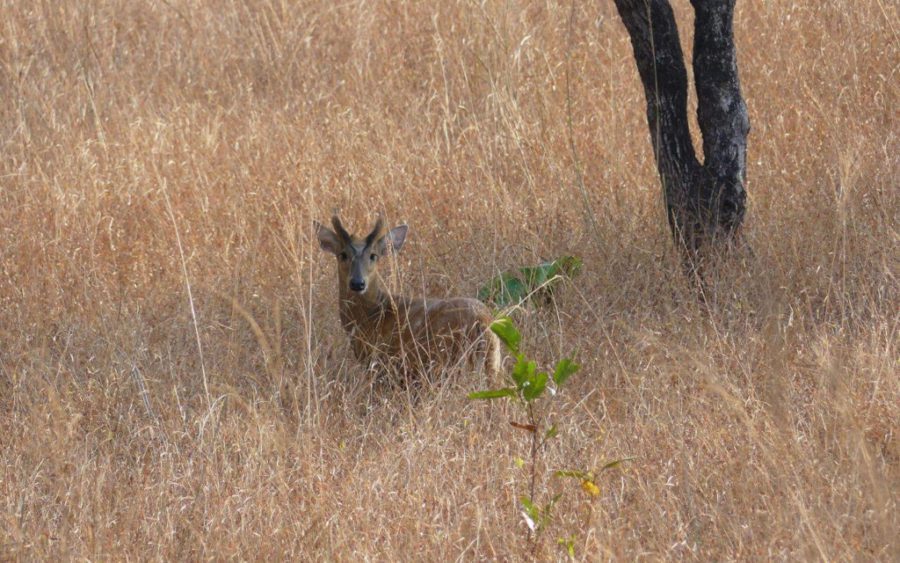A conservation organization recorded sharp declines in banteng, gaur and other species of land-dwelling hooved mammals in Keo Seima Wildlife Sanctuary over a 10-year biodiversity study, suggesting four animals are at risk of disappearing from the protected area within a few years — like tigers and wild water buffalo before them.
Wildlife Conservation Society Cambodia released a report on Monday showing that while six of the 13 species they monitored in Keo Seima over the past 10 years stayed at stable or saw increasing populations, seven species had declined.
The most impacted species were ungulates, or large hooved mammals: The populations of Eld’s deer and sambar were already too small to estimate a rate of decline, while gaur and banteng will soon also reach those levels, the report said.
In addition, the sanctuary’s population of northern red muntjac, another type of deer, declined 50 percent between 2014 and 2020, according to the report.
“Without substantial improvements in management, it is likely that that four large species (banteng, gaur, Eld’s deer and sambar) will disappear from the protected area entirely within a few years, eventually following the path of the kouprey [oxen], tiger and wild water buffalo in Cambodia,” the report said.
Among the 13 monitored species, only green peafowl and pig-tailed macaques increased their populations, while three types of primates and wild pigs remained at stable populations.
According to the report, species that spend time in trees generally had stable or growing populations, while those that live on the ground declined, suggesting that poaching or hunting with snares and dogs contributed to the falling populations.
The report also urged the government to mitigate the impacts on tourism concessions, land clearing and mining exploration licenses within the sanctuary, with habitat loss still a major threat.
However, the report said the results were an accomplishment, as all species’ population sizes were better than what WCS expected they would be if they had not implemented a “REDD+” program, in which companies with heavy carbon emissions pay for conservation organizations to protect an area.
In order to prevent further decline, WCS called for more rangers and better law enforcement in the forest, saying that Cambodia’s average of 1.9 rangers per 100 square kilometers was below the recommended rate of between at least two and 10 rangers for the same space, or even over 100 rangers.
Kim Nong, the Environment Ministry’s director-general of natural resource conservation, said during a press conference on Monday that the ministry was studying breeding for some of the endangered species at a location “within our natural protected areas.”
Marcus Hardke, an independent conservation expert with more than two decades studying forest issues in Cambodia, said hunting takes a toll on wildlife in Keo Seima but is “small fish” compared to organized illegal logging happening in the forest.
“This sort of wildlife monitoring is the core capacity of these [conservation] groups, and they are good at it,” he said in a message. “Unfortunately they struggle to address the more fundamental issues surrounding conservation in Cambodia. The history of the Seima REDD project has made that obvious.”
Despite the project, a pilot for which began in 2010, Keo Seima Wildlife Sanctuary lost 21 percent of its forest cover between 2001 and 2019 and registered more than 29,000 forest cover loss alerts from January to August this year, according to satellite data from the Global Land Analysis and Discovery lab at the University of Maryland, cited in a recent Mongabay report. WCS says it has supported the area since before 2002, when it was first designated a protected area.
Environment Ministry spokesperson Neth Pheaktra added that rangers identified 6,597 forest crimes during 18,795 patrols nationally conducted during the first nine months of the year, though only 734 cases resulted in fines and 454 were sent to court.













